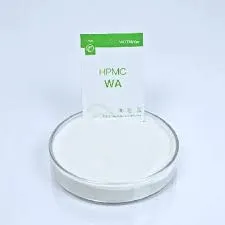
ਦਸੰ. . 01, 2024 23:16 Back to list
Synthesis Techniques and Advances in HPMC for Various Applications in Industry
A Comprehensive Overview of HPMC Synthesis Techniques and Applications
Hydroxypropyl methylcellulose (HPMC) is a widely used cellulose-derived polymer known for its versatile properties and applications across various industries. Its synthesis is of significant importance due to the diverse functionalities that HPMC imparts to formulations in pharmaceuticals, construction, food, and personal care. This article provides an in-depth overview of HPMC synthesis, highlighting the techniques involved, the properties of the product, and its various applications.
The Synthesis of HPMC
HPMC is synthesized through the esterification of cellulose, a natural polymer derived from wood or plant fibers. The primary steps in HPMC synthesis involve the following
1. Cellulose Extraction The process commences with the purification of cellulose from plant sources. This typically involves breaking down the lignin and hemicelluloses to remove impurities, yielding a pure cellulose form.
2. Etherification Reaction Once purified, cellulose undergoes etherification, a chemical reaction in which the hydroxyl (-OH) groups of cellulose react with propylene oxide and methyl chloride or methanol. The substitution of these groups with hydroxypropyl and methyl groups results in the formation of HPMC. The ratio of hydroxypropyl to methyl substitution can be varied to tailor the properties of the final product.
3. Reaction Conditions The etherification process usually occurs in an alkaline environment, where specific catalysts may be employed to enhance the reaction's efficiency. The temperature and duration of the reaction are carefully controlled to achieve the desired degree of substitution, which is crucial for optimizing the viscosity and solubility of HPMC.
4. Purification and Drying After the synthesis is complete, HPMC is purified to remove unreacted materials and by-products. Subsequently, it is dried to obtain a powdered form, ready for various applications.
Properties of HPMC
The properties of HPMC are largely influenced by its degree of substitution and the ratio of hydroxypropyl to methyl groups. Some key properties include
hpmc synthesis

- Solubility HPMC is soluble in water and forms a viscous gel when dissolved, making it suitable for use as a thickening agent. - Thermal Stability It exhibits good thermal stability, which is desirable in formulations that undergo processing at high temperatures. - Film-Forming Ability HPMC can create flexible and strong films, beneficial for coatings and drug delivery systems. - Non-ionic Character Being a non-ionic polymer, it does not interact with ionic substances, making it compatible with a wide variety of other ingredients.
Applications of HPMC
Owing to its unique properties, HPMC is used in various industries
1. Pharmaceuticals HPMC serves as a binder, filler, and coating agent in tablets. It is also used to modify the release of active pharmaceutical ingredients, making it essential for controlled and sustained-release formulations.
2. Construction In the construction sector, HPMC is employed as an additive in tile adhesives, plasters, and mortar. Its water-retention properties enhance workability and adhesion, while also improving the strength of the final product.
3. Food Industry HPMC acts as a thickener and stabilizer in food products, contributing to texture and mouthfeel. It is often used in gluten-free formulations to improve dough consistency.
4. Personal Care In cosmetics and personal care products, HPMC is valued for its emulsification and thickening properties. It is commonly found in lotions, creams, and shampoos.
Conclusion
HPMC synthesis represents a fascinating intersection of chemistry and application, showcasing how a simple polymer can be modified to meet diverse needs. Its versatility ensures a broad range of applications, supporting innovation across multiple industries. With continued research and development, the potential of HPMC is vast, promising improvements and enhancements in numerous products that enhance everyday life.
-
Unlocking the Benefits of HPMC Products: A Gateway to Versatile Applications
NewsAug.07,2025
-
Unleashing the Potential of HPMC Ashland: A Comprehensive Look
NewsAug.07,2025
-
Tile Bonding Cellulose: The Key to Superior Adhesion and Durability
NewsAug.07,2025
-
Hydroxypropyl Methylcellulose Powder: The Versatile Component in Modern Pharmaceuticals
NewsAug.07,2025
-
Hydroxyethyl Cellulose: The Versatile Solution for Various Industries
NewsAug.07,2025
-
Hydroxyethyl Cellulose (HEC): The Versatile Polymer for Various Applications
NewsAug.07,2025







